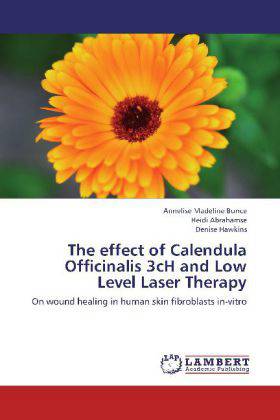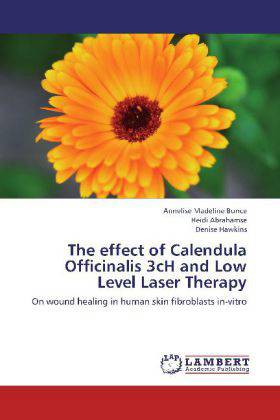
Je cadeautjes zeker op tijd in huis hebben voor de feestdagen? Kom langs in onze winkels en vind het perfecte geschenk!
- Afhalen na 1 uur in een winkel met voorraad
- Gratis thuislevering in België vanaf € 30
- Ruim aanbod met 7 miljoen producten
Je cadeautjes zeker op tijd in huis hebben voor de feestdagen? Kom langs in onze winkels en vind het perfecte geschenk!
- Afhalen na 1 uur in een winkel met voorraad
- Gratis thuislevering in België vanaf € 30
- Ruim aanbod met 7 miljoen producten
Zoeken
The effect of Calendula Officinalis 3cH and Low Level Laser Therapy
On wound healing in human skin fibroblasts in-vitro
Annelise Madeline Bunce, Heidi Abrahamse, Denise Hawkins
Paperback | Engels
€ 64,45
+ 128 punten
Omschrijving
This study aimed to determine the effectiveness of Low Level Laser Therapy (LLLT), and Calendula officinalis 3cH respectively as treatment protocols on wound healing in injured human skin fibroblasts (HSF) in vitro. Furthermore, the study aimed to investigate the effectiveness of a combination of both treatment modalities on wound healing. LLLT is a form of phytotherapy, involving the application of low-power monochromatic and coherent light to injuries and lesions to stimulate healing. LLLT has been used in many experiments since the 1960s to examine the influence of laser radiation on the healing process of wounds. Calendula preparations are mainly used for the treatment of wounds. It is an all purpose skin-healing agent. Although only a few statistically significant differences were obtained between the measurement tools and any of the treatment protocols, it is important and worth noting that small differences in the cellular level might have a significant influence at the systemic level because of cell-cell interaction that may elicit a cascade of events.
Specificaties
Betrokkenen
- Auteur(s):
- Uitgeverij:
Inhoud
- Aantal bladzijden:
- 108
- Taal:
- Engels
Eigenschappen
- Productcode (EAN):
- 9783848447985
- Verschijningsdatum:
- 22/01/2013
- Uitvoering:
- Paperback
- Afmetingen:
- 150 mm x 220 mm
- Gewicht:
- 168 g

Alleen bij Standaard Boekhandel
+ 128 punten op je klantenkaart van Standaard Boekhandel
Beoordelingen
We publiceren alleen reviews die voldoen aan de voorwaarden voor reviews. Bekijk onze voorwaarden voor reviews.









